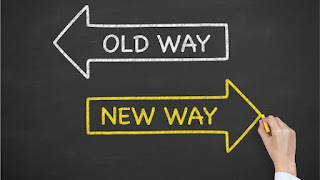How many times have we wanted to...?
 To start, I want you to think about all
those moments when we have wanted to do something important to make a change in
some community, or simply within the same family, tell me, have there been
many? Maybe most of us have wanted to make a change in some community, whether
large or small, but we simply have not had any success, on the other hand,
there will be people who would have succeeded, but because many of them apply
certain methods to be able to take your project in a very reasonable way to
success, a part of these people is by implements, they are the people who did
something from nothing and they like others, but there are people who have made
great changes in a whole community and obviously, they carry a tool type, in
this blog I will talk a little more about one of these tools in particular,
"THE THEORY OF CHANGE".
To start, I want you to think about all
those moments when we have wanted to do something important to make a change in
some community, or simply within the same family, tell me, have there been
many? Maybe most of us have wanted to make a change in some community, whether
large or small, but we simply have not had any success, on the other hand,
there will be people who would have succeeded, but because many of them apply
certain methods to be able to take your project in a very reasonable way to
success, a part of these people is by implements, they are the people who did
something from nothing and they like others, but there are people who have made
great changes in a whole community and obviously, they carry a tool type, in
this blog I will talk a little more about one of these tools in particular,
"THE THEORY OF CHANGE".
Many people (including me) try to make some
kind of change in their society but they are not successful, that is because
they do not have any type of tool to support them, "The theory of
change" provides us with a logical process to reach a result Optimally, a
theory of change can be developed when the objectives and activities of an
intervention can be identified and planned in detail in advance, or when such
intervention is tailored to new problems and the decisions of partners and
other stakeholders. So, for a theory of change there are steps, schemes, like
the following:
Objective Identification
This first step is very important because
everything will develop from here and if we are not very clear we will never
reach our goal, therefore we must ask ourselves questions such as: What do I
want to do? Who do I want to do it for? Where do I want to do it? when? why? it
is important to answer these types of questions and if necessary until they are
written down because this will be the pillar of our project.
Execution strategy
This can be encompassed in a single
question, HOW ?, this is nothing more and nothing less than making plans for
the development of our project, pre-visualizing the future steps to be carried
out and after this all the risks that each entails so that in the end we choose
a single path, it is important to know what the project will be and where we
will apply it because this will depend on how to do it since it is not the same
to apply projects for children than for adults, this can be through some
object, person, organization , etc.
Products
The tip of our project, what we want to
sell, make known, implement, this is what we fight for, it is very important to
be clear about what our product will be, I am not talking exactly about something
material, the same can be some kind of event or etc., this is what we are going
to do to bring our change, being in this step we should have already researched
the community we want to reach and therefore have a well-implemented adaptation
of our product, when performing this step , we must do something very
important, analyze the risks, the pros and cons of this process.
Results
 Analyze and show the results obtained up to
this step, we will have to use results indicator to know if we have reached the
result we expected.
Analyze and show the results obtained up to
this step, we will have to use results indicator to know if we have reached the
result we expected.Impact
The step that decides everything, maybe in
our result it turned out differently but the objective was achieved, this step
is where we observe if our objective was met, we may have reached a goal very
similar to the one we had before and that is fine but if It is not like you
already know that you have to do it again since during all this process you
have to have indicators of change, also, you can interpret a before and after
so that you can observe the impact you made.
It is very important to mention that
"Theory of Change" there are many ways to develop it, the only
objective is to be able to perform series of steps that give optimal results
with expected endings, I hope this information has been helpful and that you
can apply it correctly, see you until next time.
References:
https://www.unicef-irc.org/publications/pdf/Brief%202%20Theory%20of%20Change_ES.pdf
References:
https://www.unicef-irc.org/publications/pdf/Brief%202%20Theory%20of%20Change_ES.pdf
Comentarios
Publicar un comentario